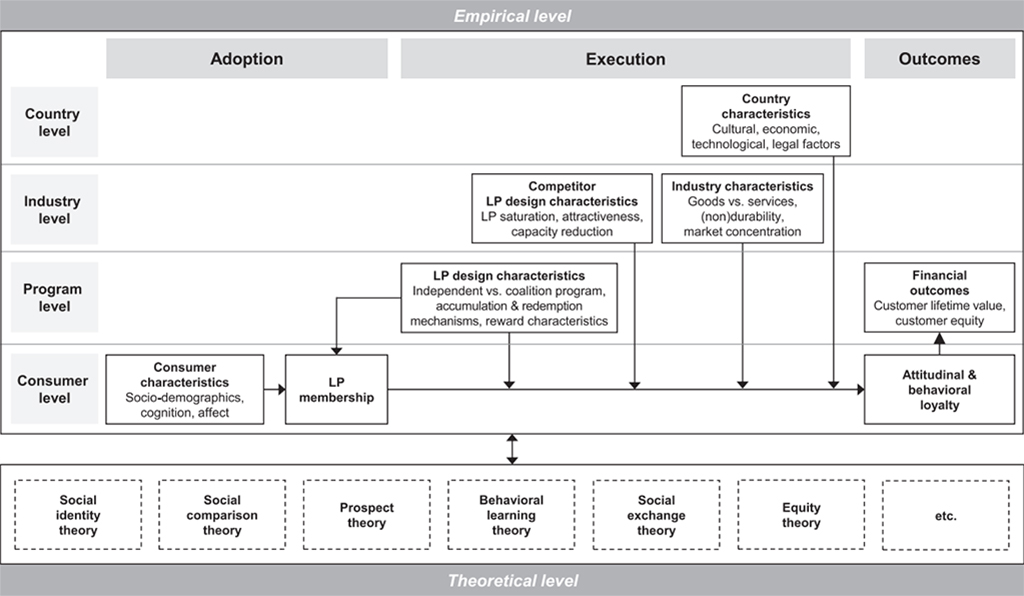The Evolution and Future of Loyalty Programs: A Review
Loyalty programs, which offer rewards to customers for their repeated engagement with a brand, have become a cornerstone of modern marketing strategies. These rewards can be both tangible, such as discounts and vouchers, or intangible, like special status levels that offer preferential treatment, such as “gold” memberships.
The origins of loyalty programs trace back to the 20th century, particularly within airlines and retailers. Today, these programs represent a multi-billion-dollar industry, and the ongoing digital transformation continues to push their evolution forward.
Over the past three decades, numerous studies have explored various aspects of loyalty programs—from the reasons customers join them, to optimal program design, and their financial outcomes. However, until now, there has been a lack of a holistic review that consolidates this extensive body of research. Our study aims to fill this gap by providing the most comprehensive overview of loyalty program research to date, structured around the Theory–Context–Characteristics–Methodology (TCCM) framework. We also outline a forward-looking research agenda to guide the future development of this field.
A Comprehensive Map of Loyalty Program Research
In our review, we developed a comprehensive map of loyalty program research, categorizing studies based on the stages of loyalty program implementation: adoption, execution, and outcomes. This map also differentiates between various units of analysis and conceptual levels, providing a simplified overview of the diverse theories and concepts that have shaped this field.
Key Insights from Three Decades of Research
Our comprehensive review reveals several key insights into the current state of LP research:
- Theoretical Underpinnings: Most studies have relied on a limited set of theories, primarily focusing on status-based, inertia-based, or relationship-based mechanisms. Social identity theory, social comparison theory, and prospect theory are frequently used to explain customer behaviors in the context of LPs. However, multi-theoretical approaches are rare, indicating a need for more diverse theoretical perspectives to capture the complexity of LP-related phenomena.
- Industry Focus: The majority of LP research is concentrated in a few industries, notably retail (particularly offline retail) and hospitality (airlines and hotels). While this focus has yielded valuable insights, there is a noticeable gap in understanding LPs in online and B2B contexts. The rise of digital platforms and the increasing importance of e-commerce call for more research in these areas.
- Geographical Distribution: Most LP studies are conducted in Western countries, particularly the United States and Europe. There is a growing interest in Asian markets, reflecting the region’s rapid economic growth and increasing consumer spending. However, research on LPs in African and Latin American countries remains limited, representing an area for future exploration.
- Program Design and Customer Engagement: The effectiveness of LPs heavily depends on their design, including reward structures, redemption mechanisms, and customer tiers. Our review highlights the importance of tailoring LPs to different stages of the customer lifecycle, with immediate rewards being more effective in early stages, and relational and status rewards gaining importance in later stages.
Challenges and Opportunities in the Digital Age
The digital revolution presents both significant opportunities and challenges for the future of loyalty programs. On the one hand, digital tools offer unprecedented capabilities for personalization and customer engagement, making loyalty programs more effective and appealing. On the other hand, these advancements come with new risks, particularly concerning data privacy and the ethical use of consumer information. As loyalty programs evolve, they must balance the benefits of digitalization with the need to address these challenges responsibly.
Future Research Directions
Our review suggests several key areas for future research to ensure the continued relevance and effectiveness of loyalty programs:
- Embrace Multi-Theoretical Approaches: To better understand the complexities of customer behavior within loyalty programs, future research should integrate multiple theoretical perspectives. For example, combining cultural theories with existing marketing frameworks could provide deeper insights into how loyalty programs function across different markets and cultural contexts.
- Expand Research into Understudied Contexts: There is a pressing need for more research on loyalty programs in online, B2B, and non-Western markets. As these sectors continue to grow, understanding the unique dynamics of loyalty programs in these contexts will be crucial for developing effective global marketing strategies.
- Examine the Role of Competition: Competition among loyalty programs is an area that has received limited attention. Future studies should explore how competitive dynamics influence customer loyalty and the overall success of these programs.
- Leverage New Technologies: As digitalization continues to reshape the marketplace, research should focus on how emerging technologies can be harnessed to enhance the effectiveness and customer satisfaction of loyalty programs. At the same time, it is essential to address the challenges these technologies present, particularly regarding data privacy and ethical considerations.
Conclusion
Our review provides the most comprehensive overview of loyalty program research to date, highlighting both the progress made and the gaps that remain. As loyalty programs continue to evolve in response to changing consumer behaviors and technological advancements, ongoing research will be essential in ensuring these programs remain effective tools for building lasting customer relationships.
By addressing the identified gaps and pursuing the proposed research directions, scholars and practitioners alike can contribute to the development of more sophisticated and impactful loyalty programs in the future.
Disclosure: This blog post was created with partial assistance from AI tools.
Full reference: Chen, Yanyan, Timo Mandler, and Lars Meyer-Waarden (2021), “Three Decades of Research on Loyalty Programs: A Literature Review and Future Research Agenda,” Journal of Business Research, 124, 179–197. https://doi.org/10.1016/j.jbusres.2020.11.057
Cite for: Loyalty program, customer loyalty, systematic literature review, TCCM review protocol, journal selection criteria, overview of loyalty program research (Figure 1), specific research gaps





